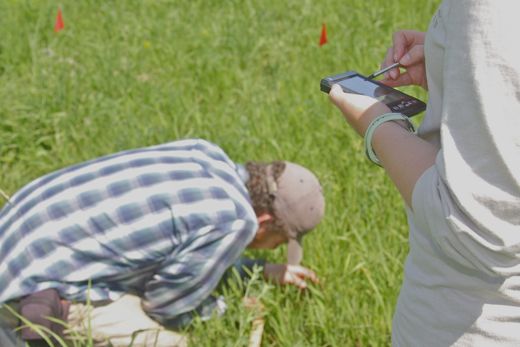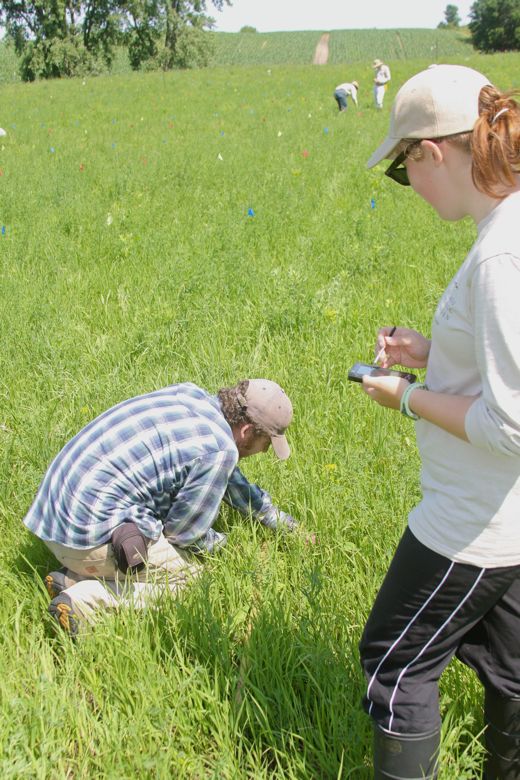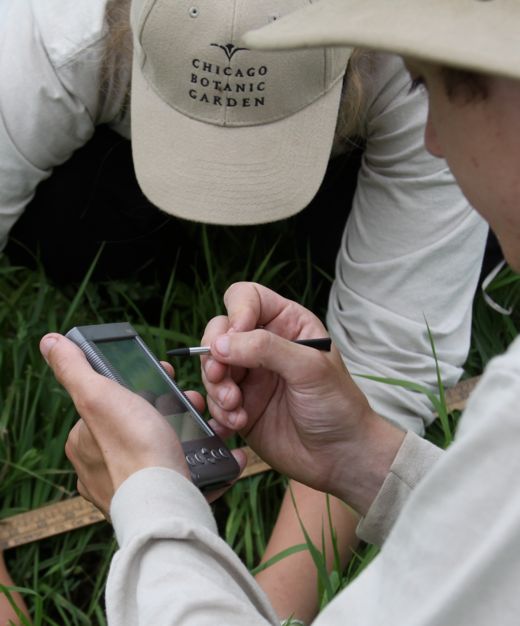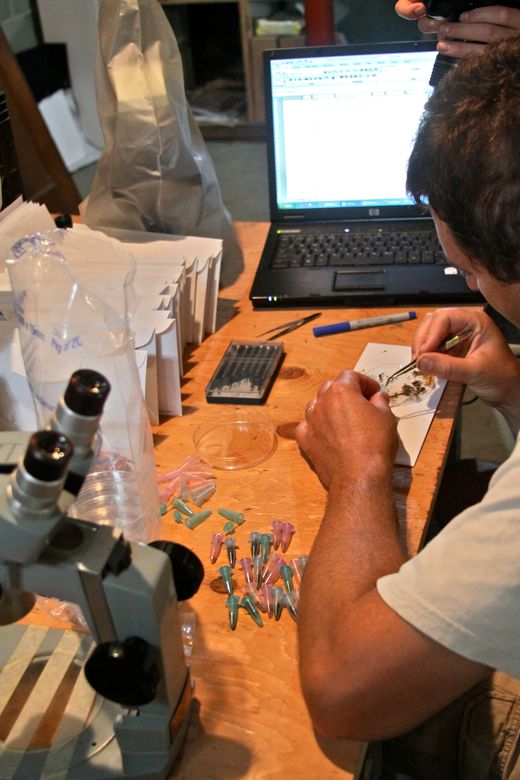Team Echinacea got a lot done this past week. On Monday we finished seedling searches, and on Wednesday we finished recruitment surveys. We’ve also made a lot of progress with the New Media Initiative: We now have a Facebook page and a Twitter account.
Then on Thursday, we started stipa searches. We looked in the Common Garden experimental plot for stipa that were planted as seed in the past two years. This means we were looking through bunches of grass to find this one specific kind of grass, which posed quite a challenge. As Stuart put it, it’s like looking for a needle in a needlestack. But we persevered! We found quite a few stipa plants, and will continue searching this week.
We also began aphid searching, as Katherine mentioned. I was glad that I didn’t find too many aphid infestations on our lovely Echinacea plants. It was a very satisfying way to end the work week.
Over the weekend, we had a 4th of July potluck-picnic celebration at Elk Lake. The food was all so delicious! And a construction team directed by Per made a formidable sandcastle fortress. Below are some pictures that Maria took. Happy (belated) 4th everyone!
|
||||
|
Here are google doc links to the most up-to-date proposals by Callin, Amber, and Maria https://docs.google.com/document/d/10Rxr9ucX6qGznUU0Dv1HFfdcgL2WRkXOHZhoJCfYSlA/edit?hl=en_US&pli=1 https://docs.google.com/document/d/1WJw0YH_KUgAH-gJFxL2lQQOA0ofHuRT-pXlIEASULdc/edit?authkey=CPOpx2E&hl=en_US After checking at Hegg Lake again, it appears there are enough Echinacea pallida plants to be able to do reciprocal crosses. I have attached my updated proposal. Long story. This morning, I managed to put on a Facebook like button, a search box, and a link to the Echinacea website under the Links heading; but later discovered that the Categories links and RSS feed links were not working properly (led to xml files rather than html files), but the Archives and Monthly Archives were fine. Not sure whether this was due to the addition of the Facebook like button or the search box or accidental changes to the rest of the script or due to older changes. Josh backed up the templates and then returned the templates to default settings, but the categories still weren’t working. I also discovered that the formatting for the Monthly Archive pages were lost, and couldn’t figure out how to restore the backup templates. To at least salvage the main page of the flog, I decided to switch to a new style (hence the change in the appearance of the flog), re-added the Facebook like button and search box and clustermap. But rest assured that the content of the flog has not been changed, just that the formatting/appearance may not look so nice right now. So sorry for the mess-up T_T At this point, I’m not sure what else I can do. Josh suggested posting on the support forum, so I just did that. Hopefully I will be able to get some help from the forum. If anyone reading this has any idea, please do not hesitate to comment. Any help is greatly appreciated! -Maria p/s Are people okay with the current layout? Or is the original layout better? Thanks I made some updates to my project proposal. You can read them here: Today we surveyed a patch of the common garden for aphid infestation. I chose my survey area based on observations I made Wednesday morning, during my initial search for aphids. I wanted my square to include at least one heavily-infested plant with ant domatia (dirt structures that ants build to cultivate aphids). Otherwise my choice of positions and rows was random. Here is a description of today’s survey. This weekend I will go over the data and make a map of aphid infestation. Because it’s still early in the season for aphids, I hope to repeat this survey one or more times this summer to look for spatial and temporal patterns of infestation. Thank you to the Echinacea team members for your diligent data gathering. Aphid survey protocol 1June2001.doc I’m happy to say the survey went smoothly. Everyone seemed to have an easy time recognizing aphid life stages and ant domatia. My only goof-up was accidentally assigning the same row to two people, leaving us one row short, but thankfully we caught it in time to finish up before a thunderstorm hit. Next time I will be more careful about my row assignments. I would like to repeat this survey several times throughout the summer–maybe once every two weeks. Here are some thoughts I have based on my observations in the common garden: 1. We have observed that plants with heavy infestations early in the season tend to have wrinkly, stunted leaves–possibly due to aphid overwintering. I suspect that these plants may serve as aphid source populations that spread to surrounding host plants. It will be interesting to see whether aphid infestation is more prevalent among plants nearby heavy aphid infestations (i.e. plants with all three aphid life stages, wrinkly leaves, and ant domatia). 2. I noticed that on plants with small infestations, ants seemed to be carrying away gravid females. Perhaps ants play a role in mitigating population-wide aphid infestation by concentrating aphids on a few heavily-infested plants. This survey won’t tell me much about the role of ants, but I am curious to see whether some plants lose their aphids throughout the season. Thanks again everyone for helping me gather my first data set! |
||||
|
© 2025 The Echinacea Project - All Rights Reserved - Log in Powered by WordPress & Atahualpa |
||||









